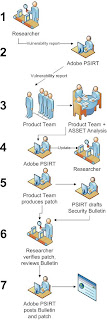Information Security Incident Rating

I've been trying to describe to management how close various individual information assets (primarily computers -- desktops, laptops, etc.) are to the doomsday scenario of sensitive data exfiltrated by unauthorized parties . This isn't the only type of incident that worries me, but it's the one I decided to tackle first. I view this situation as a continuum, rather than a "risk" rating. I'm trying summarize the state of affairs for an individual asset rather than "model risk." In the far left column I've listed some terms that may be unfamiliar. The first three rows bear "Vuln" ratings. I list these because some of my businesses consider the discovery of a vulnerability in an asset to be an "incident" by itself. Traditional incident detectors and responders don't think this way, but I wanted to include this aspect of our problem set. For these first three rows, I consider these assets to exist without any discoverab...















